
Nelumbo lutea is a species of flowering plant in the family Nelumbonaceae. Common names include American lotus, yellow lotus, water-chinquapin, and volée. It is native to North America. The botanical name Nelumbo lutea Willd. is the currently recognized name for this species, which has been classified under the former names Nelumbium luteum and Nelumbo pentapetala, among others.
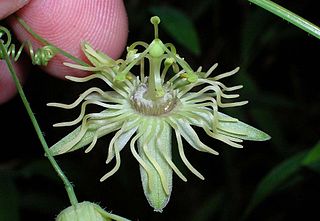
Passiflora lutea, commonly known as yellow passionflower, is a flowering perennial vine in the family Passifloraceae, native to the central and eastern United States. The vine has three-lobed leaves and small, yellowish-green, fringed flowers that appear in the summer, followed by green fruit that turn almost black at maturity. It grows in moist to wet habitats.

Cladrastis kentukea, the Kentucky yellowwood or American yellowwood, is a species of Cladrastis native to the Southeastern United States, with a restricted range from western North Carolina west to eastern Oklahoma, and from southern Missouri and Indiana south to central Alabama. The tree is sometimes also called Virgilia.

Aletris, the colicroot, colicweed, crow corn, or unicorn root, is a genus of flowering plants in the family Nartheciaceae, native to North America and to eastern and southeastern Asia, especially China. It was used as a component in Lydia Pinkham's original Vegetable Compound.
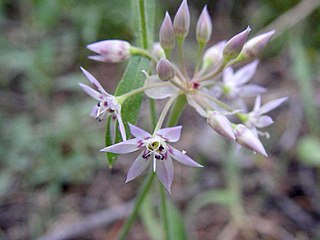
Allium campanulatum is a species of wild onion known by the common name dusky onion or Sierra onion. This is a flowering plant native to the western United States from southeastern Washington and northern Oregon to southern California, and western Nevada. The dusky onion grows in foothills and mountains, especially in dry areas, such as chaparral habitats.

Erythronium oregonum is a North American species of flowering plant in the lily family which is known by the common name giant white fawnlily or Oregon fawn-lily.
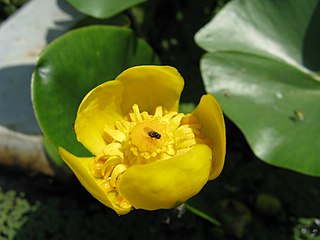
Nuphar pumila, the least water-lily or small yellow pond-lily, is an aquatic perennial plant in the Nymphaeaceae family. It is also known as the dwarf water lily since it looks like a smaller Nuphar lutea. while Nuphar pumila has a star-shaped, or lobed form of the stigma disc and glabrous leaf undersides, Nuphar lutea has a round stigma disc and the undersides of its leaves are occasionally fine-haired on the midribs. Its flowers bloom from July to August and are typically pollinated by flies.

Cirsium eatonii, commonly known as Eaton's thistle or mountaintop thistle, is a North American species of flowering plants in the family Asteraceae.

Pinguicula lutea, commonly known as the yellow butterwort, is a species of warm-temperate carnivorous plant in the family Lentibulariaceae. It grows in savannas and sandy bog areas of the Southeastern United States.

Borodinia laevigata is a species of flowering plant in the mustard family known by the common name smooth rockcress. It is native to many areas of the eastern United States and Canada, where it grows in calcareous rocky woods and bluffs. It is moderately common throughout its range, although it is absent from the southeastern coastal plain and the far north.
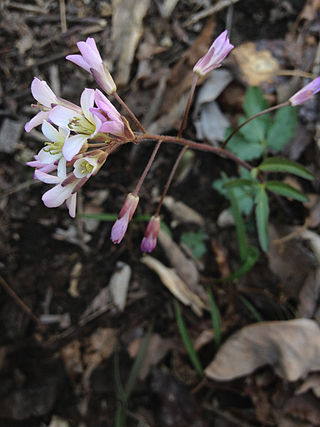
Cardamine angustata is a perennial forb native to the eastern United States, that produces white to pink or purple flowers in early spring.

Aletris farinosa, called the unicorn root, true unicorn, crow-corn, white colic-root or white stargrass, is a plant species found across much of the eastern United States. It has also been reported from the southern part of Ontario, Canada. It is known from every state east of the Mississippi River except Vermont, as well as Texas, Oklahoma, Arkansas and Louisiana. Its native habitats include moist peaty, sandy or gravelly areas.

Allium cuthbertii, common name striped garlic, is a plant species native to the southeastern United States. It occurs at elevations less than 300 m in Alabama, Georgia, North and South Carolina, and northeastern Florida. It is a perennial herb.

Nabalus crepidineus, commonly called the nodding rattlesnakeroot, is a species of flowering plant in the family Asteraceae. It is native to the United States, where it is found in the Midwest and Upland South regions. Its natural habitat is in bottomland and mesic forests, and along streambanks.
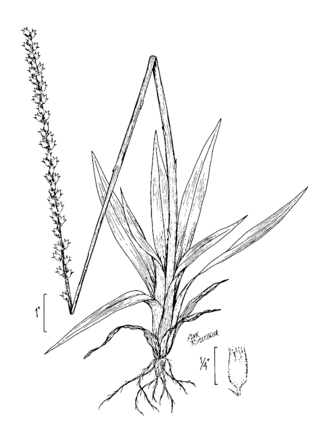
Aletris aurea is a plant species native to the southeastern United States from eastern Texas and southeastern Oklahoma to Maryland.
Aletris obovata is a plant species native to the southeastern United States.
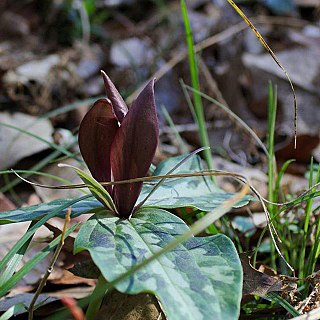
Trillium underwoodii, the longbract wakerobin, is a plant species found only in the southeastern United States.
Hieracium parryi is a North American plant species in the tribe Cichorieae within the family Asteraceae. It grows only in the western United States, in southwestern Oregon and northeastern California. It is commonly known as woollyweed.
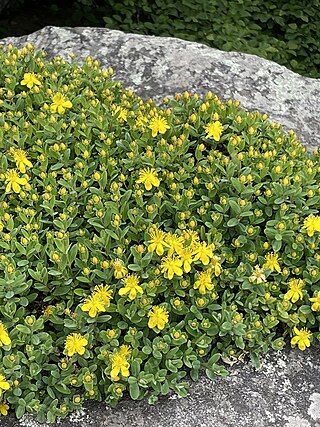
Hypericum buckleyi, known as Blue Ride St. John's wort and Buckley's St. Johnswort, is a rare species of flowering plant in the family Hypericaceae found only in the Appalachian Mountains of the southeastern United States. The species is listed in the state of Georgia (S1), South Carolina (SX), and North Carolina (S3).
Carex godfreyi is a tussock-forming species of perennial sedge in the family Cyperaceae. It is native to south eastern parts of the United States. It's common name is Godfrey's sedge.

















